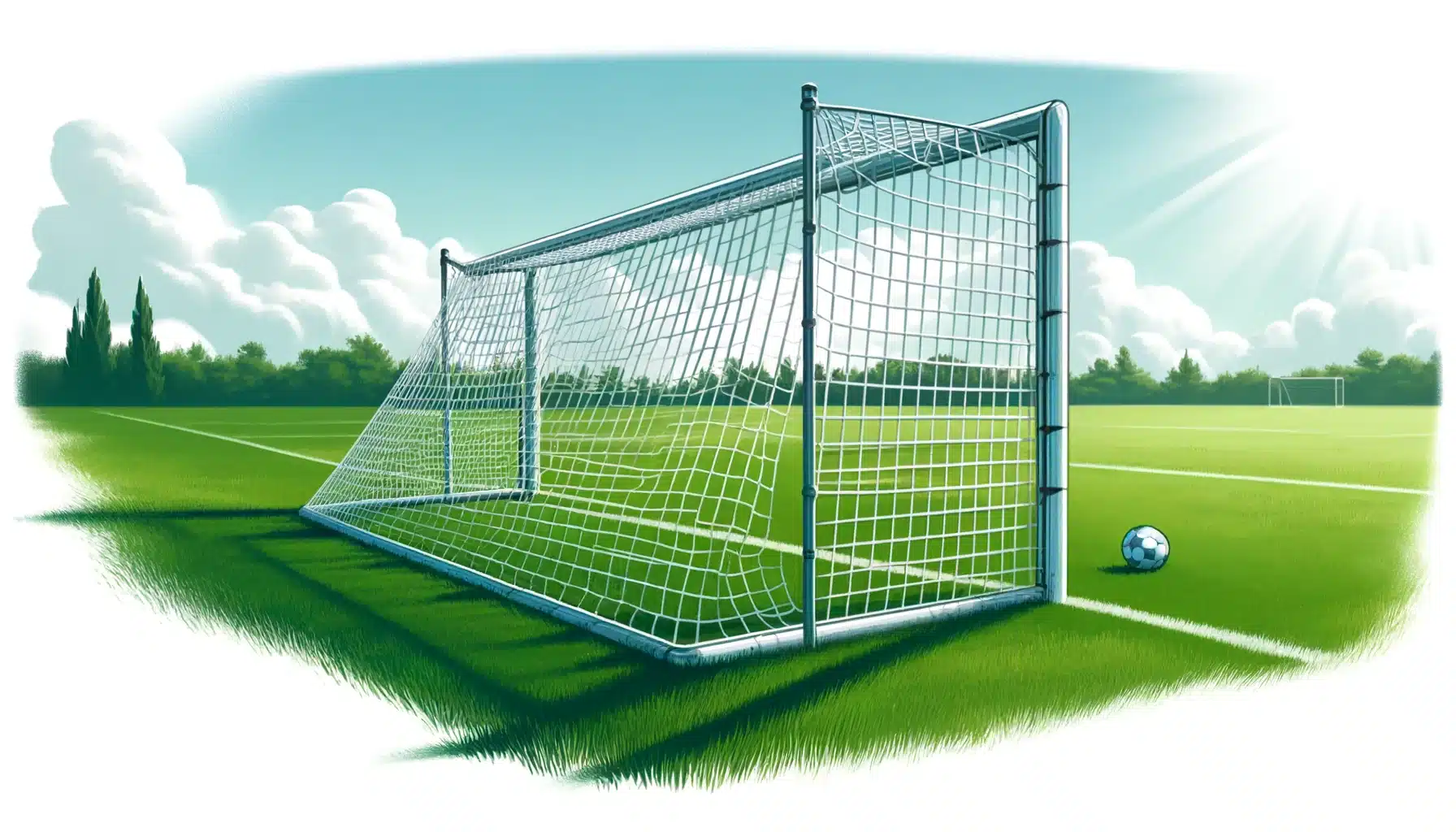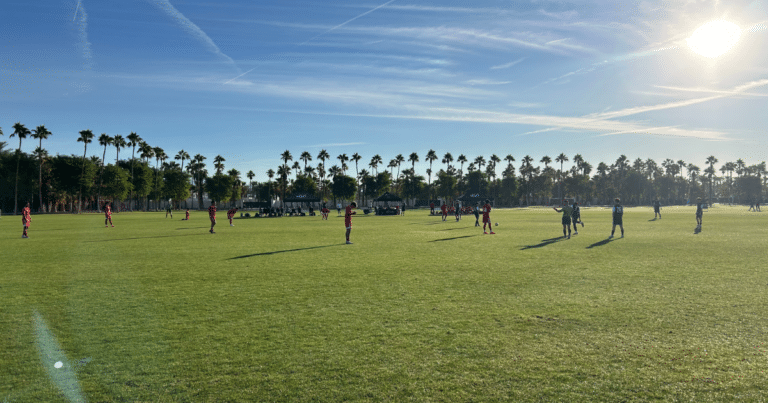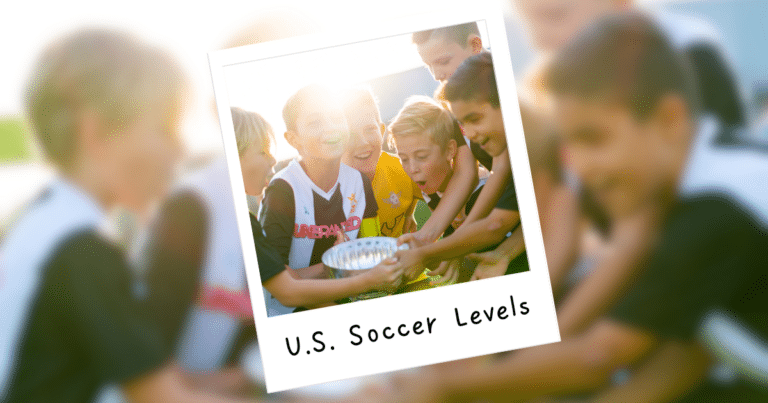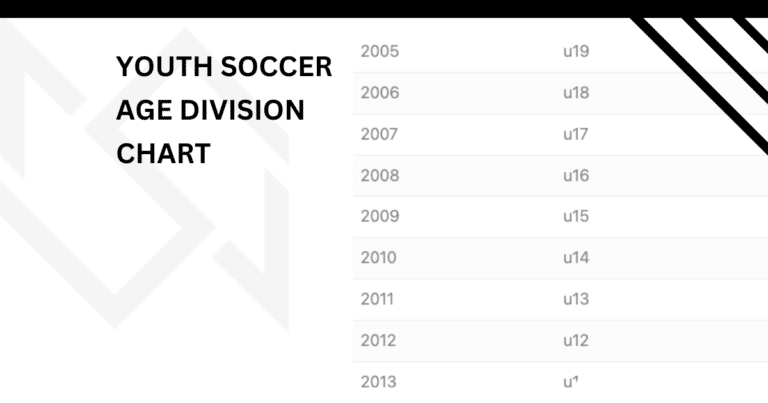How Big is a Soccer Goal?

An official soccer goal is 24 feet (7.32 meters) wide by 8 feet (2.44 meters) tall.
However, the size of a goal that your child plays on can vary. The size will mainly depend on the age group and the type of soccer that is being played.
For example, the soccer goals for kids who are playing U-8 are much smaller than the goals used by U-15 players (jump to chart).
To make it more confusing, outdoor regulation soccer goals have different dimensions than futsal or indoor soccer goals.
In this article, I’ll teach you the various dimensions of soccer goals and some interesting facts about them.
What is the Size of a Regulation Soccer Net?

According to the official soccer rules, a soccer goal needs to be 24 ft. (wide) x 8 ft. (height).
- Height: Distance between the field and the bottom edge of the crossbar
- Width: Distance between the inside edges of the goalposts
What is the Size of a High School Goal?
High school teams use the regulation goal. This is the same as the pros.
Full-sized regulation soccer nets typically start at U-13. It can be challenging for goalkeepers at this age since many of them are starting their growth spurt. It leaves a lot of room for offensive players to find the back of the net.
The National Federation of High School Associations deemed that high school soccer players should use regulation-size goals so that they can be prepared for the transition to playing in college-level and professional-level matches. This logic makes complete sense.
What is the Size of a Youth Goal?
The soccer goal begins to change in size once you get to the youth league. Because the players are significantly smaller in size, the goal needs to be reduced to reflect that.

The minimum recommended size for a youth league is 4’ tall and 3’ wide while the maximum is 8’ tall by 24’ wide.
Youth Soccer Goal Sizes by Age
The size is usually dependent on the age of the players participating, as shown below:
| AGE RANGE | RECOMMENDED GOAL SIZE (H x W) |
|---|---|
| U6 (and younger) | 4′ x 3′ |
| U6-U8 | 4′ x 6′ |
| U9-U10 | 6’6″ x 18’6″ |
| U11-U12 | 7′ x 21′ |
| U13+ | 8′ x 24′ |
These are the maximum recommended goal sizes by the US Youth Soccer and the American Youth Soccer Organization.
However, these organizations do allow for size variations if necessary and if it does not interfere with the quality of the game.
How Big Are Different Soccer Nets?
As I mentioned, soccer goals vary in size depending on age and what the purpose is. Here are some common sizes…
- Middle School Soccer: 8’x24′
- High School Soccer: 8’x24′
- College Soccer: 8’x24
- Professional Soccer: 8’x24′
- Indoor Soccer: 8’x14
- Futsal: 6’7″x9’10”
Are you looking to purchase a soccer goal for the backyard? There are fantastic options for soccer goals for the backyard.
If your child is serious about soccer and you have the room in your backyard, this can be a wise investment. Not only will it help improve their game but it can act as a temporary babysitter!
Frequently Asked Questions
8’x24′
Official soccer goals are usually made with aluminum or steel. Socketed steel designs are popular with most youth organizations as they are more affordable.

Written By: Beau Bridges
Beau is the founder of SoccerNovo, dedicated to helping players and parents navigate the youth soccer landscape. As a former youth coach and soccer parent, he shares insights on player development, recruiting, and the ever-evolving soccer scene in the U.S.
Let’s connect





